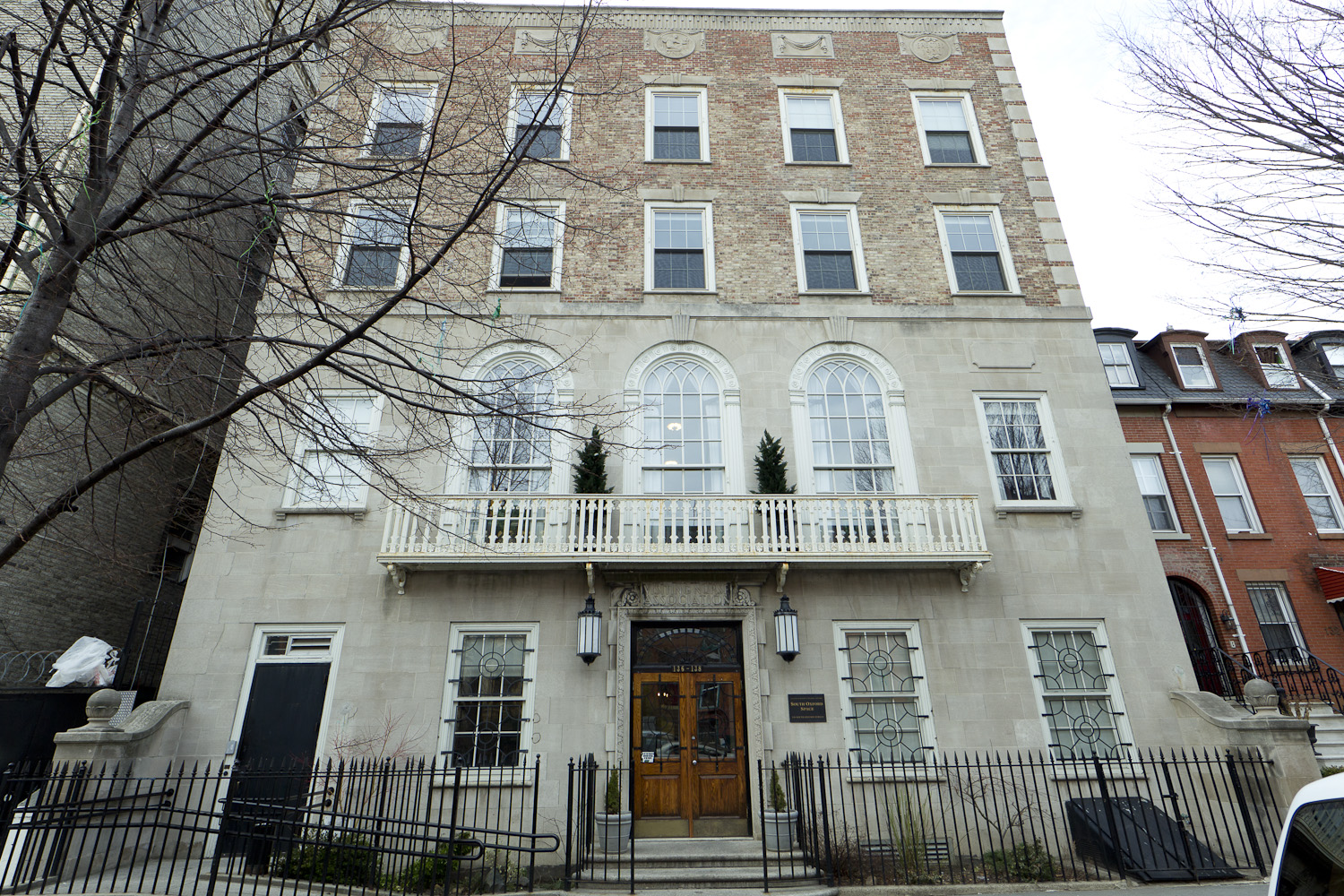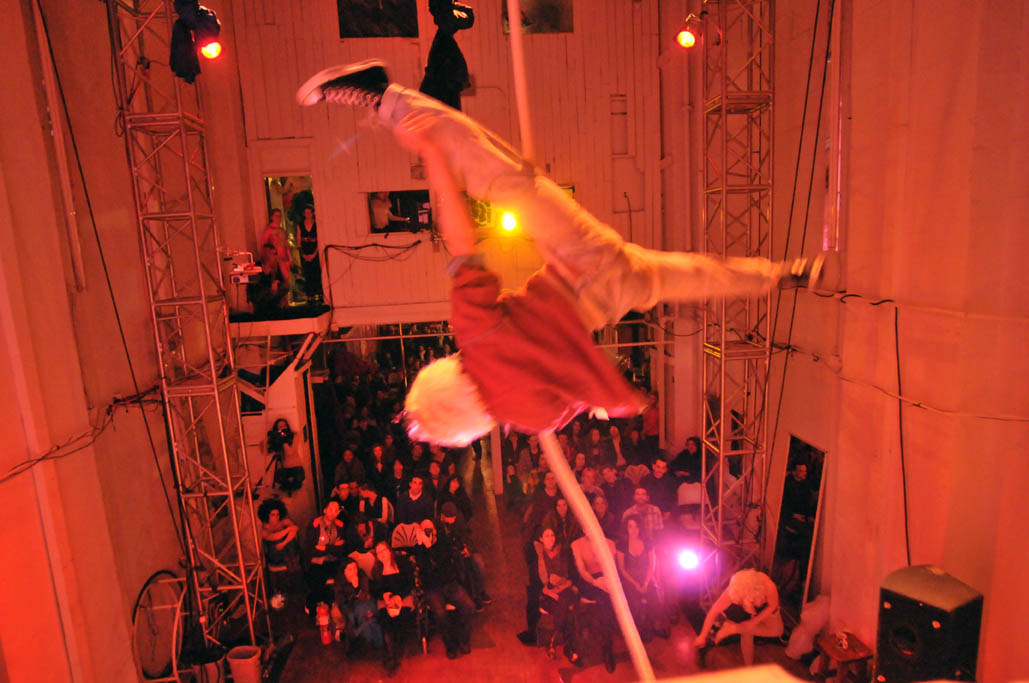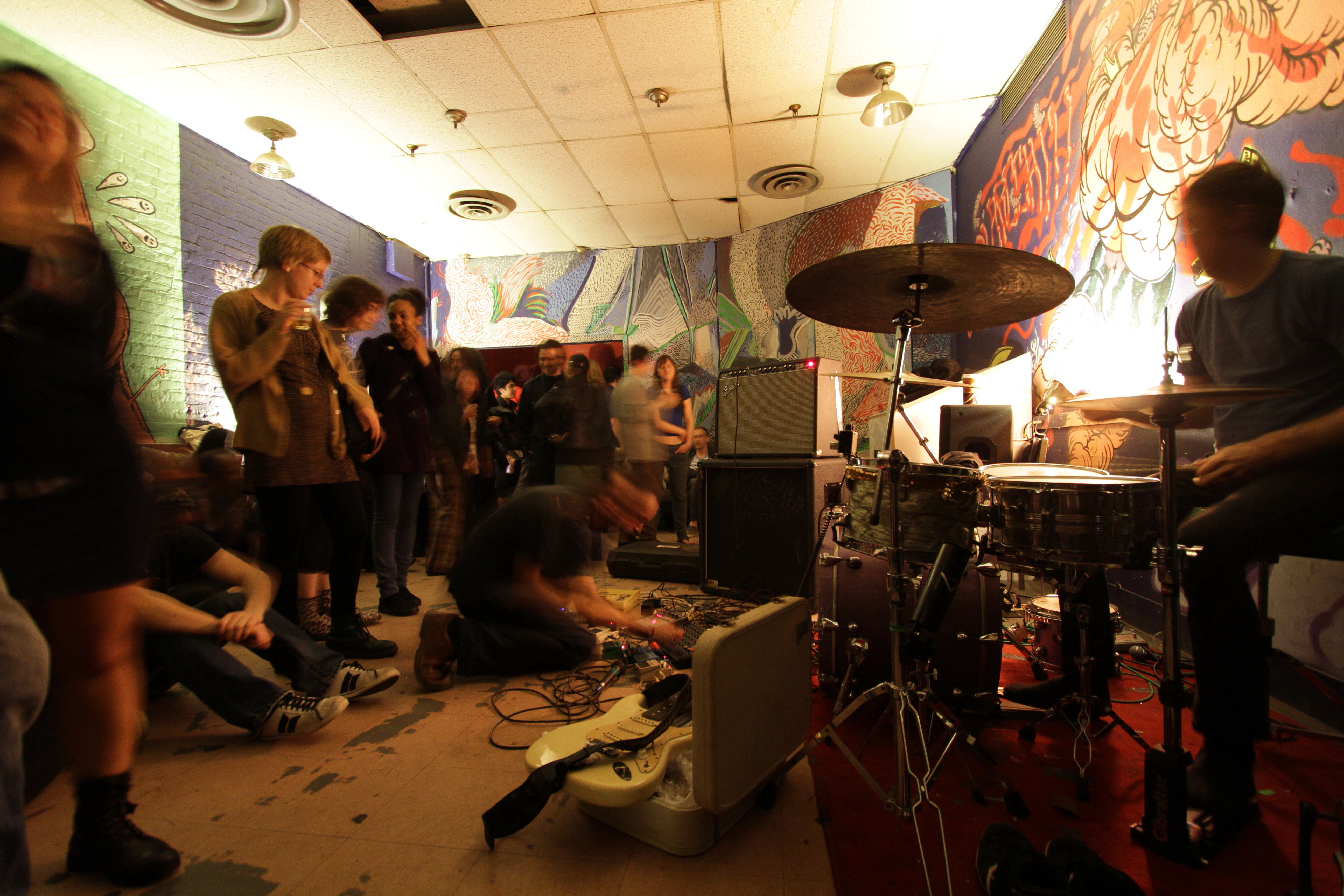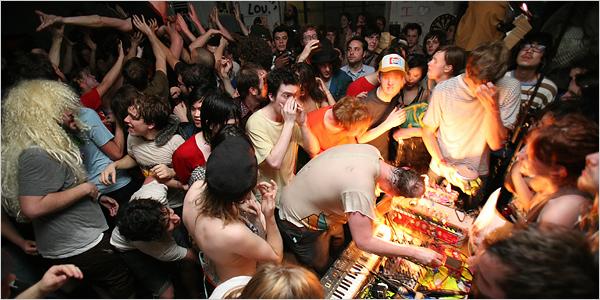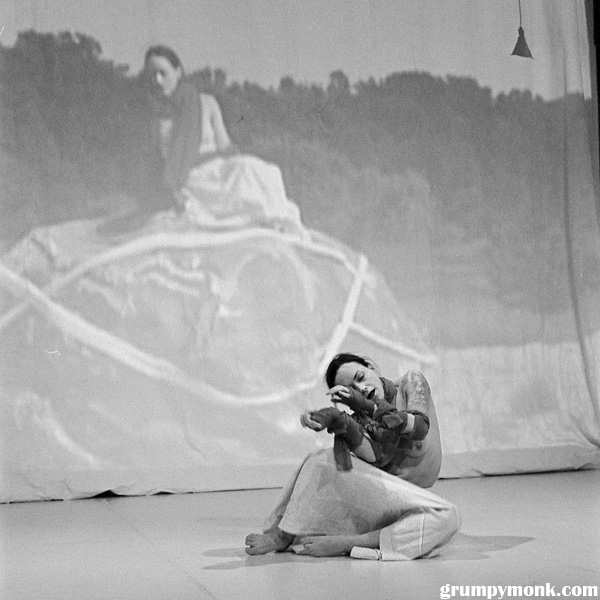south oxford space
space type: rehearsal & performance space | neighborhood: ft. greene | active since: 2000 | links: website, facebook
A.R.T. New York (the Alliance of Resident Theatres) has been supporting nonprofit theatre groups for forty years. They provide all kinds of services to their nearly 300 member organizations, like technical assistance, real estate loans, and access to shared office and rehearsal space—which is where South Oxford Space comes in. A lovely old building in Ft. Greene, South Oxford Space rents office space to twenty different theatre organization, as well as larger rooms for classes, workshops, meetings, rehearsals, and small performances.
Check out their fascinatingly diverse group of tenants, and then read on for my interview with Stephanie Bok, South Oxford’s operations manager!
- ActNow Foundation Develops, promotes, and produces works by artist of color in theater and film.

ActNow's "New Voices in Theater" reading series, reading of "Secrets of a Black Boy" by Darren Anthony
- American Opera Projects Produces contemporary operas and commissions new work.
- The Civilians Creates investigative theatre, developing new works based on contemporary and political topics.
- Elders Share the Arts Conducts and fosters programs that honor and draw on the life experience of older adults and encourage their creative expression.
- Elevator Repair Service Creates original performance pieces based on and around found texts, found objects, literature, and history.
- Encompass New Opera Theatre Produces music theatre pieces and contemporary operas.
- Lone Wolf Tribe A theatre ensemble composed of Kevin Augustine and his exquisitely grotesque puppets.
- Modern-Day Griot Theatre Company An interdisciplinary theatre company committed to moving the story of the African Diaspora forward via storytelling.
- New York City Players Creates original work about people, relationships, and, above all, feeling.
- New York Deaf Theatre Creates opportunities for the production of plays in American Sign Language.
- Nia Theatrical Production Company Produces new works by emerging artists and provides arts-in-education programs to the educational community.
- Page 73 Productions Develops and produces works of early-career playwrights who have shown commitment to the theatre but received neither wide public recognition nor substantial production opportunities.
- Ripe Time Develops and produces ensemble-based performances that navigate the terrain between dance and theatre, word and image.
- Shadow Box Theatre A children’s company that uses traditional Chinese shadow puppets to tell folk tales from many cultures.
- Target Margin Theater Experimental theatre company that reinterprets the classics.
- Trilok Fusion Arts A multi-disciplined company providing a forum for artists around the world to collaborate and create new and unique art with a focus on culture and tradition.
- Urban Bush Women An ensemble dedicated to exploring cultural expression as a catalyst for social change, synthesizing contemporary dance, music, and text with the history, culture, and spiritual traditions of African-Americans and the African diaspora.
- White Bird Productions Works with playwrights, composers and performers to develop and produce theatre that embraces issues of the environment and community.
brooklyn spaces: Do you come from a theatre background?
Stephanie: Yes, I’ve been in theatre all my life. I write and produce my own shows, and I work with several of the groups here. I’m a staff writer for American Candy, I work with White Bird Productions as a teaching artist, and my one-act plays have been produced by American Theatre of Harlem and ActNow.
brooklyn spaces: So you really understand the struggles theatre groups go through. Is there a lot of interaction between the different organizations in the building?
Stephanie: The tenants have certainly done collaborations, and there’s also sharing of resources—they’ll hire the same lighting designer or use the same actors. It definitely feels like a community, because these are really active go-getters who are at the heart of what’s happening in New York City theatre right now.
brooklyn spaces: So when new tenants are coming in, do you look for groups that will fit the fabric of the community that’s already here?
Stephanie: They don’t have to necessarily “fit in,” but they do have to be a theatre-producing nonprofit organization that is a member of our network. We really value the diversity we have here with the different types of companies. We want everyone to feel welcome, and A.R.T. New York definitely doesn’t judge anyone’s work.
brooklyn spaces: What are some of your favorite groups that have been through here?
Stephanie: I can’t really pick favorites, but I can say that I’ve been very privileged to see some amazing theatre come from the groups that rehearse and have offices here. It’s really exciting to see snippets of the rehearsals, to get to know the actors as they’re coming through in their sweatpants, and then go see the show all put together, with great sets and everyone in their costumes and makeup. I just saw Ripe Time’s show last night, which was amazing, they do really beautiful work. I’m looking forward to The Tale of Frankenstein’s Daughter that Rabbit Hole Ensemble has been rehearsing here. I also really love when Christopher Bayes’ Funny School of Good Acting has clown classes here, it’s great to hear all the yelling and carrying on.
brooklyn spaces: Do you feel like this neighborhood or Brooklyn in general has an effect on art and performance today?
Stephanie: This building has definitely seen a wider variety of uses than the other A.R.T. New York building, which is in Midtown Manhattan. We have someone who sells Mary Kay cosmetics, we have a woman who has a prom dress giveaway every spring, we’ve got a group that’s been doing a church service in the Great Room every Sunday for nine or ten years. The Greene Hill Food Co-op and Community Board 2 have used the Great Room for meetings. We have kids’ music classes here six days a week, Music Together of Ft. Greene and Music for Aardvarks; we’ve got a group called City Kids Dance! that does ballet and superhero classes. There’s such a variety of things that happen here, it’s kind of became a neighborhood institution.
brooklyn spaces: What are your goals for the future of the space?
Stephanie: My mission over the past few years has been to try to get more and more theatre-type things in here, and to really focus on A.R.T. New York’s mission of promoting theatre in New York City. And just moving onward and upward, making sure that the rooms are in use all the time, promoting the space as somewhere to come and rehearse, to do a staged reading, a performance, that kind of thing. Just really having this identified as a space where theatre is made in New York.
***
Like this? Read about other theatre & performance spaces: Bushwick Starr, Brooklyn Lyceum, Cave, Chez Bushwick, Clockworks Puppet Studio, UnionDocs
